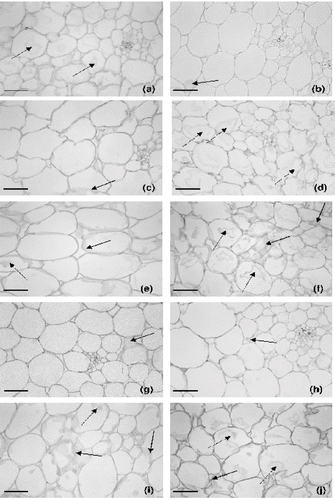Figures & data
Table 1 Fresh melon composition (Cucumis melo inodorus variety. Gold Mine cultivar)
Figure 1 The calcium content of melon subjected to different treatments. FR: without osmotic treatment; S40: osmotically dehydrated in a 40°Brix sucrose solution; S40CA5 to S40CA20: osmotically dehydrated in a 40°Brix sucrose solution with the addition of 5–20 g kg−1 of calcium lactate; S60: osmotically dehydrated in a 60°Brix sucrose solution; S60CA5 to S60CA20: osmotically dehydrated in a 60°Brix sucrose solution with the addition of 5 – 20 g kg−1 of calcium lactate. Mean separation by the Tukey test. Different letters indicate statistically significant differences at p ≤ 0.05.

Figure 2 Weight reduction (WR), water loss (WL) and solids gain (SG) of melon pieces subjected to different treatments. (A) osmotic dehydration in a 40°Brix sucrose solution with or without the addition of calcium lactate; (B) osmotic dehydration in a 60°Brix sucrose solution with or without the addition of calcium lactate. Mean separation by the Tukey test. Different letters indicate statistically significant differences at p ≤ 0.05.
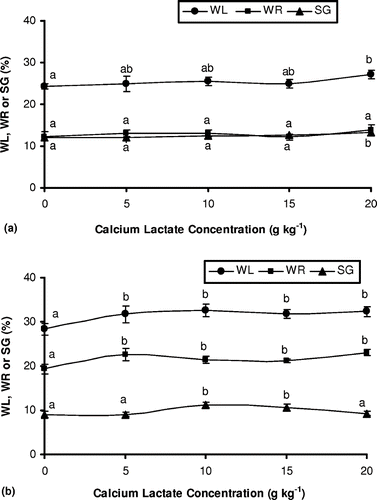
Figure 3 Stress at failure of melon pieces subjected to different treatments. FR: without osmotic treatment; S40: osmotically dehydrated in a 40°Brix sucrose solution; S40CA5 to S40CA20: osmotically dehydrated in a 40°Brix sucrose solution with the addition of 5–20 g kg−1 of calcium lactate; S60: osmotically dehydrated in a 60°Brix sucrose solution; S60CA5 to S60CA20: osmotically dehydrated in a 60°Brix sucrose solution with the addition of 5 – 20 g kg−1 of calcium lactate. Mean separation by the Tukey test. Different letters indicate statistically significant differences at p ≤ 0.05.
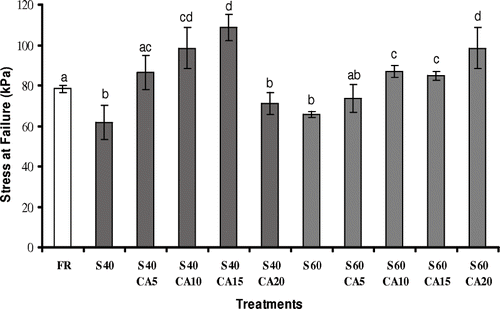
Figure 4 Strain at failure of melon pieces subjected to different treatments. FR: without osmotic treatment; S40: osmotically dehydrated in a 40°Brix sucrose solution; S40CA5 to S40CA20: osmotically dehydrated in a 40°Brix sucrose solution with the addition of 5–20 g kg−1 of calcium lactate; S60: osmotically dehydrated in a 60°Brix sucrose solution; S60CA5 to S60CA20: osmotically dehydrated in a 60°Brix sucrose solution with the addition of 5 – 20 g kg−1 of calcium lactate. Mean separation by the Tukey test. Different letters indicate statistically significant differences at p ≤ 0.05.
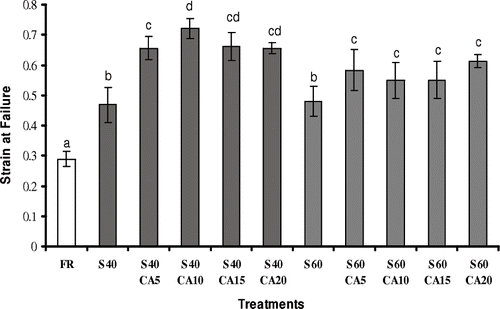
Figure 5 Relaxation time of melon pieces subjected to different treatments. FR: without osmotic treatment; S40: osmotically dehydrated in a 40°Brix sucrose solution; S40CA5 to S40CA20: osmotically dehydrated in a 40°Brix sucrose solution with the addition of 5–20 g kg−1 of calcium lactate; S60: osmotically dehydrated in a 60°Brix sucrose solution; S60CA5 to S60CA20: osmotically dehydrated in a 60°Brix sucrose solution with the addition of 5 – 20 g kg−1 of calcium lactate. Mean separation by the Tukey test. Different letters indicate statistically significant differences at p ≤ 0.05.
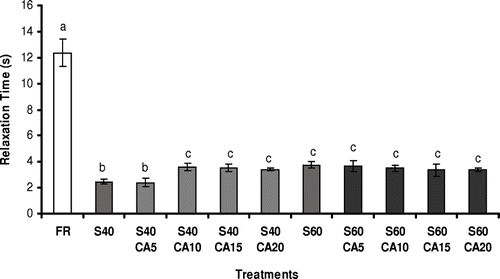
Figure 6 Micrograph of fresh melon mesocarp (parenchyma tissue). Scale bar = 140μm. V = vacuole; IE = intercellular spaces; solid arrow = cell wall.
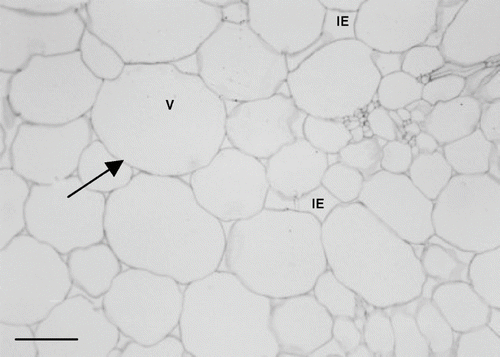
Figure 7 Micrographs of melon mesocarp (parenchyma tissue) subjected to different treatments. (a) osmodehydrated in a 40°°Brix sucrose solution; (b), (c), (d) and (e) osmodehydrated in a 40˚Brix sucrose solution with the addition of 5, 10, 15 and 20 g kg−1 of calcium lactate; (f) osmodehydrated in a 60°Brix sucrose solution; (g), (h), (i) and (j) osmodehydrated in a 60°Brix sucrose solution with the addition of 5, 10, 15 and 20 g kg−1 of calcium lactate. Scale Bar = 140μm. solid arrows = cell wall damage; dashed arrows = cellular plasmolysis.
